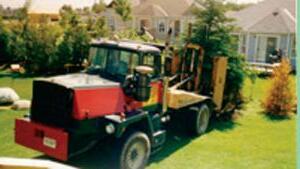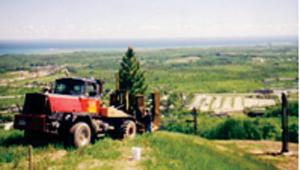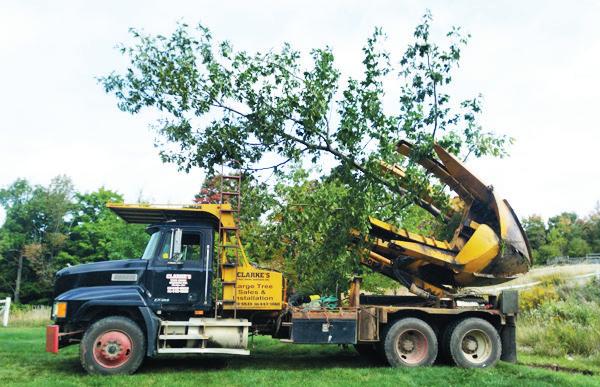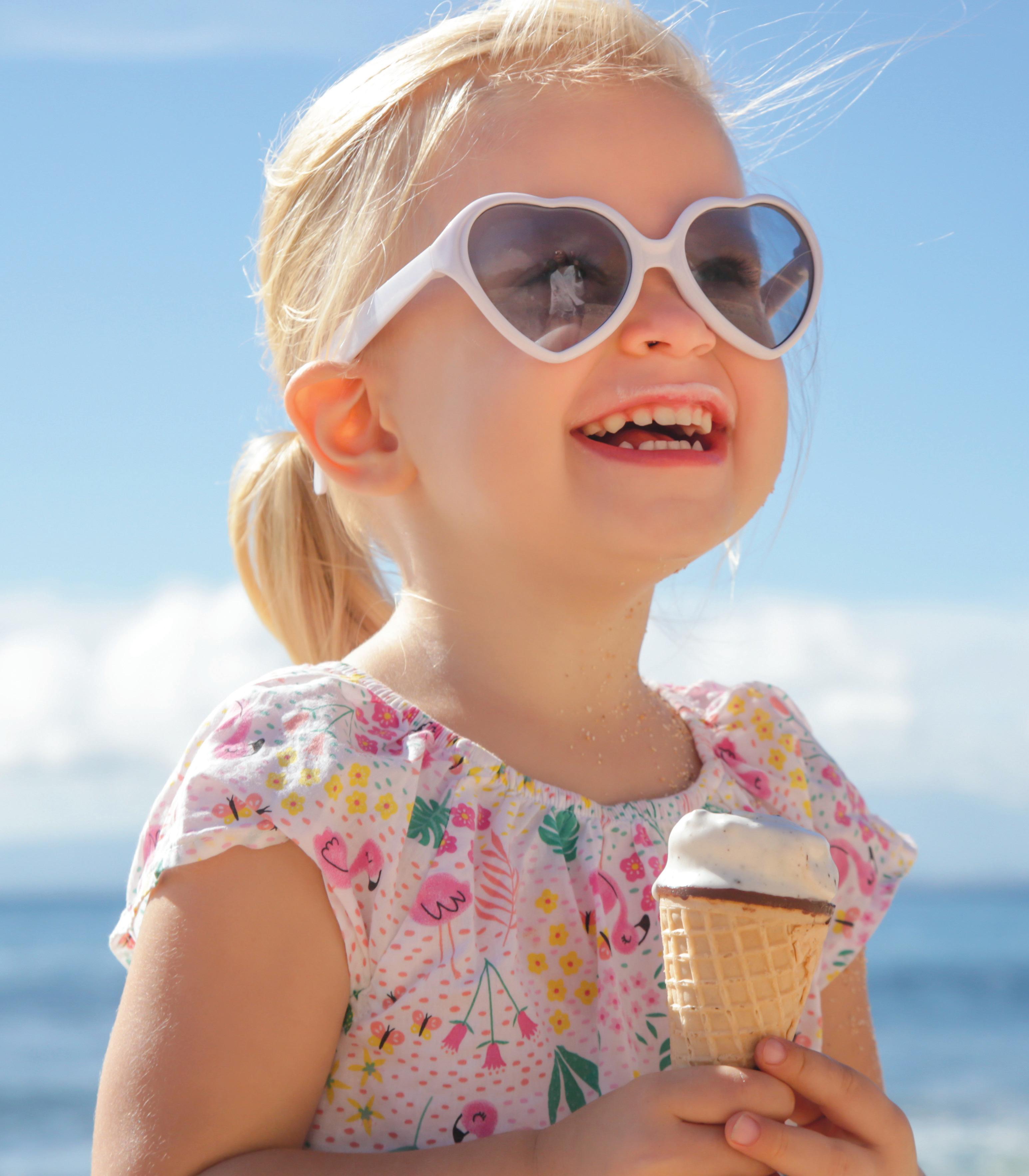

Upgrade Summer Lunches
(Family Features) When the kids are home for summer break, meal-prep becomes a must for busy families to ensure nutritious foods are on the menu. This summer, give your kiddos the fuel they need for all their warm-weather activities and adventures with a healthy twist on a childhood classic.
One bite into a grilled cheese sandwich and you’re back in your childhood kitchen, bringing all the nostalgic vibes you can pass down to your little ones. Plus, with nearly endless combinations, there’s a solution for everyone from classics to creative versions.
Fruit in a grilled cheese may not be the first idea that comes to mind, but these Blackberry Grilled Cheese Sandwiches offer a juicy, slightly tart burst of flavor tucked between crunchy slices of bread. It’s a sweet, savory lunch that’s just funky enough to impress while putting fresh produce on your kids’ plates.
“We love juicy blackberries – not just because they’re delicious, but because they’re packed with fibre,” registered dietitian Tony Castillo said. “That fiber helps keep you full, supports gut health and keeps your energy steady. Plus, blackberries are loaded with antioxidants and vitamin C, making them a true superfood. They’re perfect for baking, savoury dishes or just as a snack on the go.”
Kale Grilled Cheese
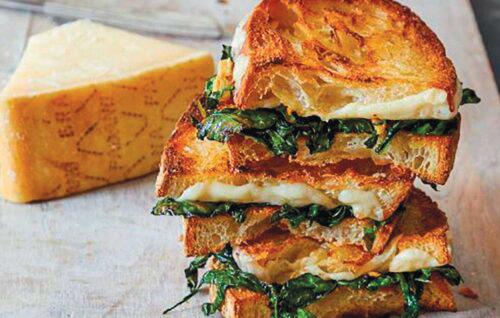
Servings 2
INGREDIENTS
2 teaspoons olive oil
1 garlic clove smashed
4 cups about 1/2 bunch Tuscan kale, cut into ribbons salt to taste
1/2 lemon juice only
2 tablespoons salted butter softened
4 slices sourdough sandwich bread
2/3 cup about 2 ounces finely grated Grana Padano PDO cheese, divided
2/3 cup shredded mozzarella cheese
DIRECTIONS
1. In large skillet over medium heat, heat oil. Add garlic; cook until golden and fragrant, about 3 minutes. Add kale; cook and stir until slightly wilted and dark green, 2-3 minutes. Season lightly with salt, to taste, and lemon juice. Remove to plate.
2. Wipe skillet clean. Spread butter on one side of each slice of bread, dividing evenly. Place two slices, buttered sides down, into skillet over medium-low heat. Onto each slice, divide half the Grana Padano; top with half the mozzarella.
3. Cook until cheese is melted and bottom is golden, 6-7 minutes. Add half the kale to one slice and close sandwich. Repeat with remaining ingredients.
Picky eaters have met their match with Chicken and Apple Grilled Cheese Sandwiches. Tender shredded chicken meets tart apple slices, ooey gooey cheese and whole-grain bread for an unexpected twist that will have taste buds tingling. With minimal ingredients and maximum flavour, they’re ideal for busy weeknights or lazy weekend lunches.
• If you’re aiming to upgrade your cheesy sandwich arsenal, consider these tips from Healthy Family Project:
• Cook low and slow over medium-low heat so the bread reaches a crisp golden while cheese melts to perfection.
• Real butter or olive oil adds a level of crispiness and flavor.
• Experimenting with cheese can give sandwiches an extra boost. Cheddar is the classic option, but mozzarella, gouda and brie bring newfound flavour profiles.
Serve up more delicious, kid-friendly lunches this summer by visiting HealthyFamilyProject.com.
Chicken & Apple Grilled Cheese
Servings 4
INGREDIENTS
1 tablespoon unsalted butter
8 slices whole-grain bread
8 ounces sliced rotisserie-style chicken breast
4 slices sharp cheddar cheese
1 apple thinly sliced prepared salad for serving
DIRECTIONS
1. Heat large skillet over medium-low heat.
2. Lightly butter one side of each slice of bread. Place bread butter-side-down in skillet. Top with chicken, cheese and apple slices. Top with slice of bread butter-sideup.
3. Cook 2-3 minutes, flip and cook 2-3 minutes, or until cheese is melted.
4. Remove from heat and cut in half. Repeat with remaining sandwiches.
5. Serve with prepared salad.
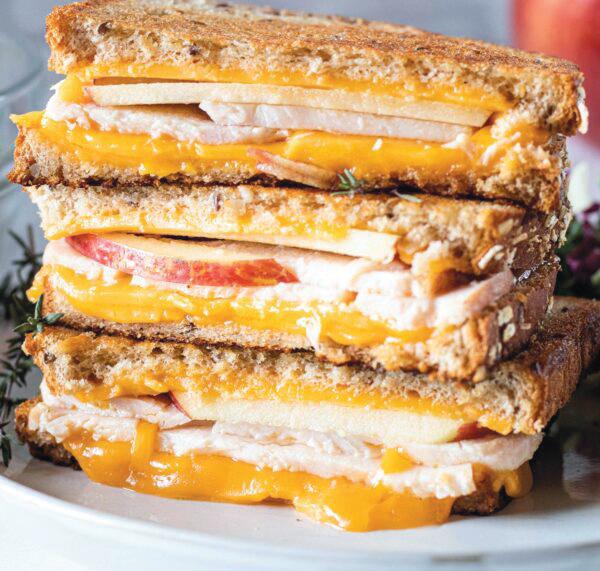

Blackberry Grilled Cheese
Servings 2
INGREDIENTS
1 tablespoon mayonnaise
1 tablespoon stone-ground mustard
4 slices whole-grain bread
2 slices provolone cheese
10-12 blackberries cut in half
DIRECTIONS
1. Heat medium skillet over low heat. In small bowl, mix mayonnaise and mustard; spread on one side of each slice of bread.
2. Place bread mayo-side-down in skillet. Top with cheese and blackberries. Add second slice of bread mayo-side-up.
3. Cook 3-4 minutes per side, or until bread is toasted and cheese is melted. Repeat with remaining ingredients.
Do you enjoy writing poetry? We have started the “Poetry Corner”. If you would like your poetry considered for publication in What’s Up? Georgian Bay, please email your poem to: vledden1@gmail.com.
Thank you to all of our readers, contributors and advertisers for your continuing support.
Publisher















705-817-1007
Wasaga Beach Office: 1249 Mosley St. Wasaga Beach



OWNER/PUBLISHER/AD SALES Victoria Ledden | 705-429-0761 | vledden1@gmail.com PHOTOGRAPHER/WRITER Don Beaulieu














































































































































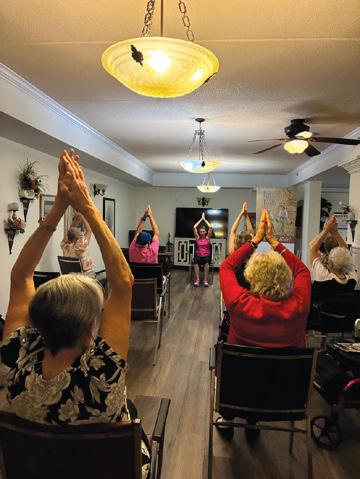
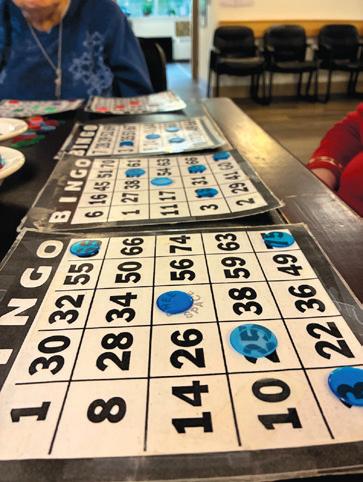
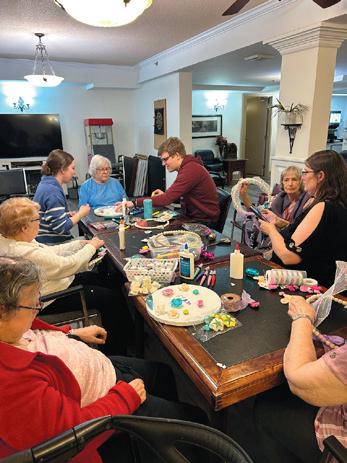

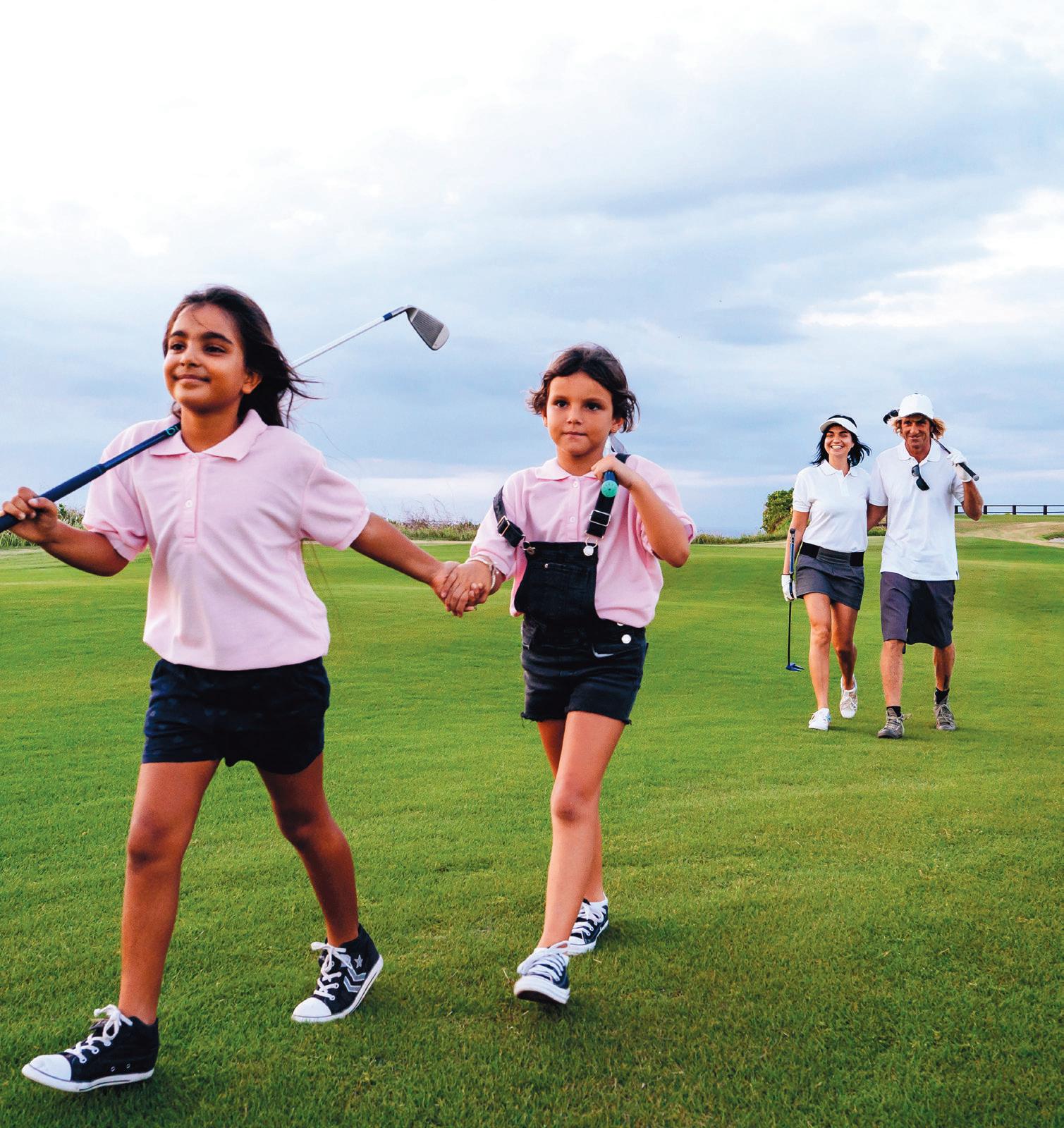
A surprise tickle attack, especially in sensitive areas like the armpits, torso, or soles of the feet, can send most people into uncontrollable laughter as they squirm away, while others might stay completely unfazed. What exactly transforms a specific touch into a tickle?
Konstantina Kilteni runs a somatosensation and gargalesis (touch and tickle) laboratory to understand how the human brain distinguishes between self-generated and externally-generated touch.
“Tickling is a sensation that almost everybody has experienced at least once in their life,” remarked Konstantina Kilteni, a neuroscientist at the Donders Institute for Brain, Cognition, and Behaviour (Netherlands) and the Karolinska Institutet (that is the official spelling, in Sweden). Kilteni and colleagues developed an automated “tickle machine” to control and measure specific aspects of what makes a touch ticklish. Here, participants placed their feet through openings in a platform, where a mechanical stick tickled their soles. They monitored brain activity and the wide range of reactions: Some people laughed uncontrollably, others flinched and recoiled, and some remained entirely unaffected.
Although Aristotle, Greek philosopher and polymath (384–322 BC), believed tickling was unique to humans, we now know that rats and great apes can also be tickled. This suggests an evolutionary basis for this sensation. Thus, scientists have proposed several theories about why tickling exists. One idea is about serving a social function. It helps bonding between people because it makes people laugh. Another theory proposes that the tickle response is a protective reflex alerting us to unexpected sensations in vulnerable areas.


Help! I can’t do this myself
But: Tickling oneself is an almost impossible task. This is because our brain processes self-touch differently from touch by others. When a person moves their hand to touch their face, the brain’s somatosensory cortex registers the contact to a lesser degree than to that of a stranger’s touch. That’s because, even before touch occurs, the cerebellum, an area involved in predicting movement, anticipates the sensation and prevents the tickle reflex from kicking in.
Individuals with schizophrenia show reduced neural activity in areas related to self-touch. This may make it easier for them to tickle themselves. Researchers postulate that this may be a disruption in the anticipatory mechanism and be related to the severity of their hallucinations, where individuals perceive self-touch as foreign. Different hypotheses exist but much remains unknown. This writer still wonders, though, despite the laughing and giggling; does any one really enjoy being tickled or is it a torture? That’s a rhetorical question, just to tickle your thoughts.
Submitted by Don Beaulieu
Sweet & Savoury Stir Fry
(NC)
Prep time:
INGREDIENTS
minutes Cook time: 15 minutes Makes:
1 tbsp (15 ml) oil
1 package (227 g) sliced crimini mushrooms
1 large red bell pepper, sliced
1 small zucchini, quartered
1 small red onion, sliced
2 cups (500 ml) broccoli florets
1 cup (250 ml) sugar snap peas
1 cup (250 ml) carrots, sliced
1 cup (250 ml) baby corn
1/2 cup (125 ml) chicken (or vegetable) broth
1/4 cup (60 ml) reduced-sodium soy sauce
3 cloves garlic, minced
3 tbsp (60 ml) brown sugar
1 tbsp (15 ml) cornstarch
1 tsp (5 ml) minced ginger
1 tsp (5 ml) sesame oil



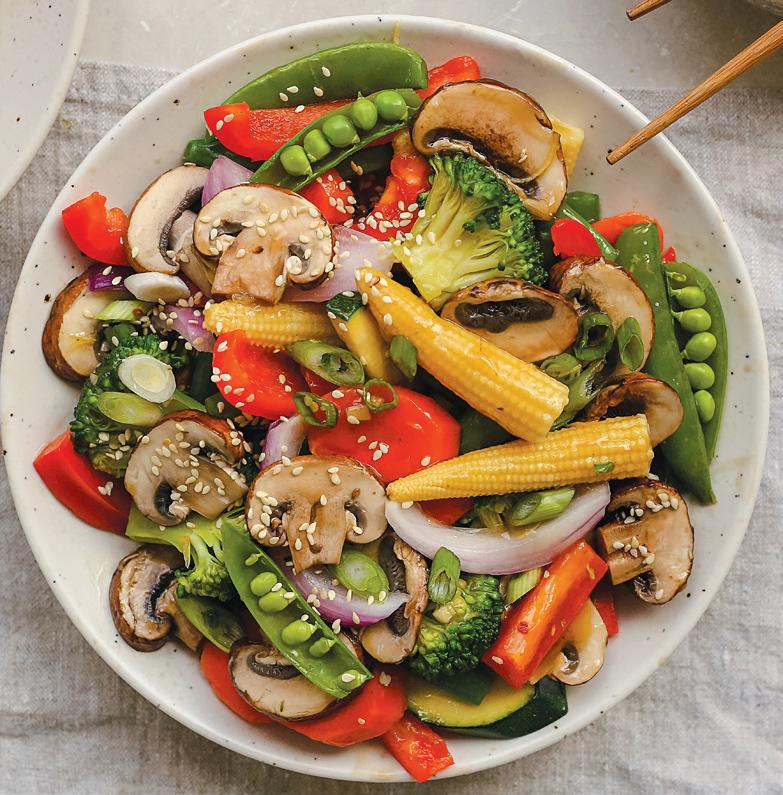
Optional garnish: Chopped green onions, sesame seeds DIRECTIONS
1. Heat oil in a large nonstick wok or skillet over medium-high heat. Add mushrooms, bell pepper, zucchini, onion, broccoli, peas, carrot and baby corn. Sauté 6-8 minutes until vegetables are almost tender.
2. In a medium bowl, whisk together chicken broth, soy sauce, garlic, brown sugar, cornstarch, ginger and sesame oil.

3. Pour over sauteed vegetables and cook until sauce has thickened; about 2-3 minutes. Garnish with green onions and sesame seeds, if desired.
Tips:
To ensure the vegetables cook at the same rate, cut them into similar sized pieces. Canned baby corn can be found in the international aisles of most grocery stores.
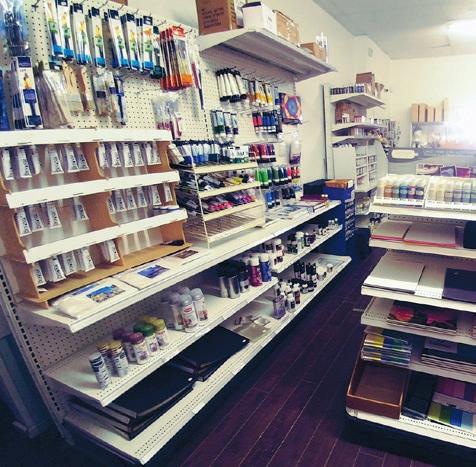









Reporter Going Through Another Stage
Our intrepid What’s Up? Georgian Bay reporter Don Beaulieu has an additional gig these days, outside of writing and photography. Some may say he is a man of many talents, Beaulieu says that he has a lot of hidden talents, and is still trying to find them. Those who know him are aware that he is drawing on talent and experience he demonstrated back in 1993 into 2002 running an open stage venue under the moniker Don’s Coffeehouse. That adventure began in church halls in Elmvale and wound up in a purpose-bought frame church in Hillsdale, Ontario. In those days, Beaulieu’s wife Carolyn provided the desserts and beverages, and on special occasions, full dinners. People came for her gastronomic treats as well as the music. With many musical events and experiences over the years between then and now, Beaulieu is back to hosting an open stage in Wasaga Beach at what’s becoming a music hot-spot, The Hive Restaurant & Pub.

Visiting Wasaga Beach as part of a graduation celebration, Hamiltonians Aisha and Jordan were at The Hive’s first open stage in June. They hadn’t planned on singing but they got hooked on the vibes and offered up a song borrowing Don’s guitar. Their harmonies were bang on. Their good nature and appreciation of how good the Town of Wasaga Beach had been to them was evident. They left a good memory for the full house in attendance.
“Providing an outlet for budding musicians is absolutely rewarding for everyone involved” he says. The newer performers, possibly nervous as heck and not used to being on stage or using a sound system, get the chance to experience all that, plus an audience. Many professionals show up to try new material or perhaps perform a style they don’t have the opportunity to do in their professional setting. Don, the audience and fellow performers are very supportive offering compliments beyond their applause. This is a confidence booster and is very encouraging and inspiring for the up-and-coming.
When Hive owner KellieJoe Darnley considered who could host these evenings, she said “We didn’t need to look far. Don Beaulieu was the clear choice.” She recognized his decades of experience on stage, coffee houses to festivals. “Don not only brings musical chops, but a deep appreciation for the creative process and the courage it takes to share your voice” Darnley continued.
This is not a jam (where any number of
musicians take to the stage simultaneously to play on every tune), Beaulieu points out, nor is it a song-circle (usually an acoustic event with players taking a turn each and often accompanying others, as they sit in a circle). The open stage is a place for small acts to shine, and buff their tunes.
It’s hard to tell who is more excited, Darnley or Beaulieu. “Don has a reputation for running smooth, inclusive and vibrant shows.” In fact, in the late 1990s Don’s Coffeehouse (a private venue Beaulieu ran as an open stage) received an award for “Unity in Diversity” for bringing all walks and ages of people together, in the same room all appreciating music, poetry, comedy and more.
Beaulieu describes the first open stage he hosted at The Hive back in June. “It brought back so much of what I remembered from my previous years hosting an open stage. We had teenagers, a couple duos, who offered spectacular harmonies and song arrangements.” The teens performed some newer familiar tunes and some originals (electric guitar, keyboard and acoustic guitar were involved over the course of their sets). A couple of adults offered some tunes too, voice and guitar. One fellow who is familiar with open stages was very complimentary about The Hive, how Beaulieu hosted the evening and how good the sound quality was. Beaulieu plays a few numbers off the top of the evening and will fill in as necessary over the course of the night, although, we suspect he won’t have much need for that.
The second open stage on July 12th saw ten

Wendy Caudle is well-known to Hive patrons and beyond. Best known as one member of the duo Denim Waves (with Len Corkum) she got back to her solo roots last month at the open stage. Later in the evening, she joined fellow pianist/vocalist/ harmonicist Nick Procenko on stage, providing harmonies for him. Open stage host Don Beaulieu has enjoyed sitting in with Denim Waves on percussion for some gigs. You can catch Denim Waves at the Wasaga Beach Farmers market on Tuesday, August 26th from 4–6:30 p.m.
performers come out to play. Ages ran from elementary school to seniors. Acts were singles, duos and a trio. Piano, harmonica, spoons, tambourine and guitars were played. Country, rock, blues, pop music, original songs... a large gamut of styles and presentation. “We had three generations
of one family take to the stage!” Beaulieu’s open stages have been known to bring family members together, enjoying the same thing, which would virtually never happen at home, except maybe for pizza night.

Up from the Barrie area, Daryl Woytowicz made his second appearance on our open stage last month. He’s the sort of musician who says he’s still learning but yet, tackles tunes with guitar and vocal acrobatics beyond what many would consider attempting. And he does them well. Daryl enjoys the atmosphere at The Hive’s open stage, not to mention the professionalism of the sound setup. We look forward to hearing him again.
The open stage is scheduled for evennumbered Saturdays beginning this August 2nd, with one exception being the 16th of August (There is a private function at The Hive that evening). Other interruptions may happen along the way, but basically, even-numbered Saturdays, 7 to 10 p.m. will see Beaulieu and guest musicians taking to the stage at 1441 Mosley Street in Wasaga Beach.
The Hive provides a hearty menu, cold beers and more; on those hot days of July, Beach 1 Cerveza on tap was a non-musical hit. The venue offers a laid-back, cozy atmosphere providing a perfect setting for a night of entertainment.
With the popularity of live music at this venue, reservations are recommended. Beaulieu doesn’t book the open stage performers, they are welcome to show up and surprise him. If you have questions about the stage set up, email Beaulieu at don@donshots.ca. It is a small stage area, therefore single acts, duos and perhaps tight trios are best suited. Darnley emphasizes “Don believes in lifting others up. He’s passionate about giving new and emerging artists a chance to be heard. He listens, encourages and celebrates everyone who steps up to the microphone. That’s exactly the spirit we want to cultivate at The Hive”. “It’s cozy, and that’s part of the atmosphere... You’re among friends” says Beaulieu.
Even numbered Saturdays, 7 to 9 p.m., come listen, come play, offer some poetry, some humour, tell a story... The stage will be yours, sort of a fifteen minutes of fame. The open stage will be happening on August 2 and 30th. Find The Hive at 1441 Mosley Street, Wasaga Beach.
Submitted by Don Beaulieu

The Master Gardener’s Corner - August
We have certainly had the HEAT this summer, and the rain as well. The corn is high and the weeds too! Your garden should be looking great. Congratulations! Now, what to do this month.
• Water well, and water deep in the early morning and/or the evening, if your municipal water restrictions allow.
• Top up your mulch. Make sure all bare ground is covered by at least 2 inches. It works to suppress weeds, keeps the soil cool and damp, retains the rain and your watering.
• Sow vegetable seeds now (or again) for a fall harvest of spinach, radishes and some varieties of leaf lettuce.
• Tidy up plants and shrubs with a little judicious pruning, but early in the month.
• Stake tall perennials, like delphinium and New England asters against the wind.
• Cut your grass at least 2’’ high to combat drying out your lawn.
• Check out bulb catalogues and order spring flowering bulbs before they’re gone
• Finally, it’s time to pull, or cut off the browned leaves of spring flowering bulbs. Trim back iris leaves. My picky mother would use her best kitchen scissors to cut up one side of each fan and then down the other side to make a perfect arrow.
• Fill in any gaps in your flower garden with fall-flowering perennial plants, like mums and asters.
• Start drying flowers and herbs. Pick your lavender now for drying for sachets.
• Start to dig up and divide day lilies when they stop blooming.
• Collect seeds that have matured but not yet fallen from the pods, like poppies and lupines. Once the pods have dried out, store seeds in air tight containers in a cool location, or sprinkle them around your garden for colour next year.
• Take a hard look at your garden and take pictures too, to decide where there are empty spaces for new plants this fall. Identify any plants that have not performed well, (or you can’t stand) and plan to replace them with a fall planting program of shrubs and perennials.
• Early Fall is a great time to sow grass seed and plant new perennials, trees and shrubs. They will get a big jump on planting them next Spring!
• Look for the annual Grey County Master Gardener’s fall plant sale, Saturday September 13th from 9am until noon. It’s in Meaford again this year at the Meaford Rotary Harbour Pavilion. Choose from unique perennials and lots of native and pollinator plants at reasonable prices. Cash, Debit, Credit. Arrive early for best selection.

Things to do in your garden each month taken from the Ontario Master Gardener Calendar by John Hethrington, Past President, Master Gardeners of Ontario. For more information, or your copy of the 11” x 17” calendar of the full year’s tips for a $2 contribution to Master Gardeners, call 519-599-5846.
Submitted by John Hetherington

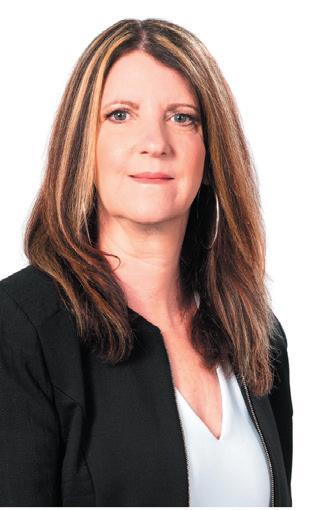






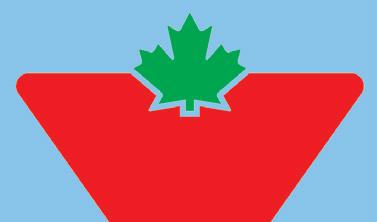





Cleaning for Baby
A little bundle of joy is a big bundle of work with a huge responsibility. Babies require a lot of equipment and it needs to be cleaned carefully as a newborn’s immune system is very vulnerable to all kinds of bacteria. To scrub down and sterilize everything in sight in the first 6 months is a must! To find the right balance between cleanliness and germ phobia is very important. You don’t have to scrub down and sterilize everything! But be meticulous and clean any item that the baby touches with his/her mouth (bottles, nipples, baby utensils, teething rings)!
CHANGE TABLE
It is easier to keep the change table clean if you place a few clean paper towels on it before each diaper change. It protects the table from germs. When it gets dirty, clean the table with a mild detergent or liquid soap and water. Rinse off the entire surface with warm water and wipe down the pad and the table with a clean cloth.
DIAPER PAIL
Use 1 cup of white vinegar, 1/4 cup of baking soda and 3 litres of water. Wear rubber gloves when you clean the pail and lid. Line it with a plastic bag after wiping down the pail with a dry cloth.
CRIB, HIGH CHAIR, STROLLER, DIAPER BAG
Sprinkle baking soda on a clean cloth and wipe down the crib rails and the mattress. Rinse it
with warm water and dry it with a clean cloth. Clean a high chair, stroller and diaper bag with the same method. Always use a clean cloth to avoid bacteria being spread from one item to another. (Baking soda is a mild alkali: dissolve dirt in the water. Acts as a mild abrasive when not 100% dissolved.)
TOYS, BABY UTENSILS
Most of these items can be cleaned in the dishwasher. Clean them regularly to keep the microbes and organic materials away! Most stuffed animals can be washed in the washing machine to kill dust mites. Be sure to check on the label for the recommended cleaning method.
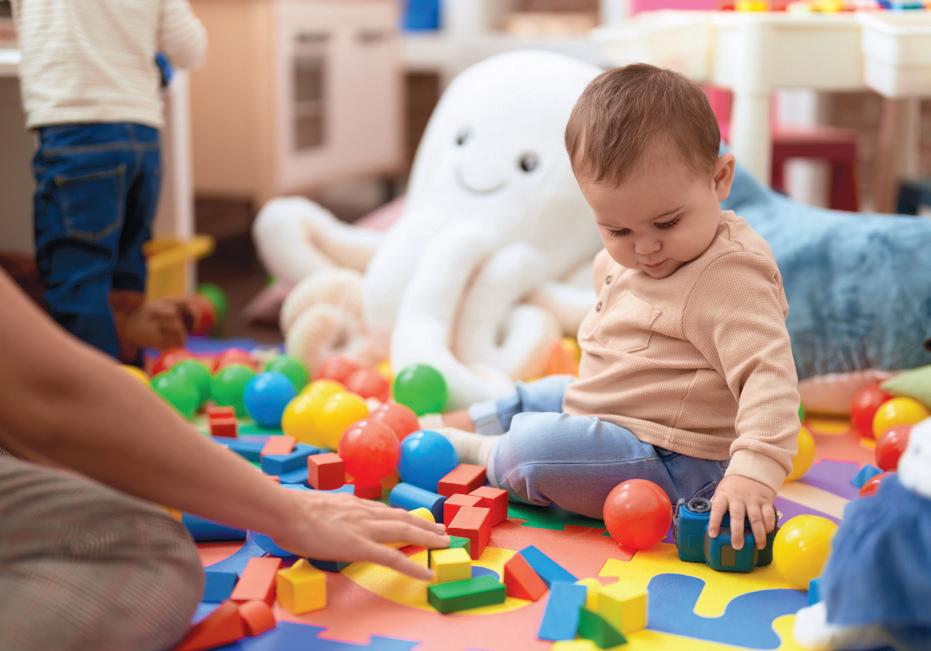
BABY BOTTLE, PACIFIER
As soon as baby finishes with a bottle, rinse it thoroughly under running water so the bacteria has less chance to stick around
on the surface. Wash the bottle, nipple and pacifier in hot water with dish washing liquid. Remove carefully any caked-on milk in the interior corners and underside of the nipple. A good bottle brush helps to eliminate all of it. Rinse everything well with running water. Drain and air-dry. You can also clean the items in the dishwasher using high heat and the drying cycle.
BOOKS
Board Books - You can use a damp cloth to wipe pages and dry thoroughly.
Cloth Books - Hand wash with cold water and a baby -friendly detergent (phosphate-free). Gently swish and soak for a few minutes. Rinse thoroughly and gently press out excess water (do not wring it!) Or you can put them in a pillow case and use the washing machine gentle cycle.
Air dry the books in a shady location to prevent fading. Always check the cleaning instruction as some books may have specific cleaning instructions on their covers.
If you have any cleaning related questions contact me, I will be happy to help you!
Edit Baker Greencleanercanada 519-938-1702
grcleaner@gmail.com


Your Exit Cue: Drivers vs. Passengers
There is a universal conundrum happening in parking lots and driveways every day. It’s not just you and your friends and family. Drivers can park the car, get out and be inside the store before their passenger has gotten out of their seat. Our humanness is to blame for this, regardless of “But they (the passenger) can SEE we have arrived and that the car will be parked really really soon”.
There are a number of reasons this can be, all related to our brain’s interpretation and the inherently different perceptions of driver and passenger.
1. LACK OF PREPAREDNESS
Drivers often anticipate the stop—they know when and where they’re parking, so they begin gathering their thoughts earlier and are mentally prepared to get out. Drivers often have a hand on the door handle as the car comes to a stop. Passengers, on the other hand, are reactive, waiting until the car is fully stopped before they start doing anything.
2. LESS IMMEDIATE RESPONSIBILITY
The driver has a task to complete: Parking and exiting efficiently. Passengers, however, often feel less urgency, especially if they’re not the one initiating the next activity or if they’re still engaged in conversation, checking a phone, or simply relaxing.
3. MORE STUFF TO MANAGE
Front seat passengers often have bags or purses at their feet, perhaps even the purchase made at the previous stop. Not to mention drinks, snacks, or phones in cup-holders. With all their detritus, passengers may find even unlatching their seatbelt to be more difficult.
Drivers tend to keep their area more streamlined for ease of operation and certainly won’t be keeping items at their feet. Those distractions simply don’t exist.
4. LESS PRACTICE OR HABIT
Drivers get in and out of cars all the time—it becomes “muscle memory”. Passengers, especially if they don’t ride often, don’t develop the same efficiency. Writer’s note: “Muscle memory” is a nickname. Your muscles don’t remember anything—your brain does.
5. SOCIAL OR POLITE HESITATION
Some passengers wait to see what the driver is doing, or feel they shouldn’t rush ahead. It’s a kind of social deference—like not jumping out until it feels like “your turn.” This, despite the fact that drivers exit the car with efficiency and speed 99% of the time. Or so it feels. Other ways to interpret why drivers and passengers differ include drivers being taskorientated when passengers are experience-orientated. The drivers stay in “task mode”— thinking along the lines of “Park, brake on, belt off, door open, go.”
Passengers are in “ride mode”, and often don’t flip into action until the car is fully still. Even if they know you’re pulling into the store, there’s this subtle: “We’re here? Oh, now I do stuff.” It’s not about somehow not knowing they are at their destination—it’s about when the action impulse kicks in. For drivers, it kicks in early. For passengers, it’s reactive. There is cognitive load and role perception happening too. Drivers carry a sense of agency and responsibility. Passengers, even though aware of what’s coming, don’t bear the same mental load. That creates a sort of permission to disengage—they aren’t “on duty.”
While the driver is mentally preparing, the passenger may be: finishing a thought, wrapping up a text, slowly re-entering “active human” mode. Then there is the passenger debris field of their accumulated items such as bags at their feet (either for shopping, from shopping, or both), sunglasses on the dash, snacks or drinks, phone et al. They know they’re stopping but they don’t gather things until the car stops.
Despite a humorous (or too close to the truth) overtone, all this is a real psychological phenomenon: When people are part of a group and not in charge, they subconsciously put in less effort. In the car? The driver leads. The passenger coasts, and sometimes that includes the time it takes to swing open the door.
Especially in certain relationships—think parent, child, partner, or friends—the passenger may feel they can just… take their time. It’s not malicious, but there’s an unspoken: “They won’t leave without me.” That little emotional safety net buys them extra seconds to fumble with a scarf, sigh dramatically, and finally exit.
Passengers know what’s coming. But they operate on a different mental timeline. Drivers are actors; passengers are audience until the final scene. The passenger often does not prepare exiting until the driver starts to exit. If the driver sits, to wait, the passenger will seem to wait for the person who moves quicker anyway.
And drivers, you know you can’t call them out on it without sounding petty. How hilarious if right now, there is a passenger out there, reading this in the car, in a parking space. At least give your driver a pen and the word-search page.
Submitted by Don Beaulieu





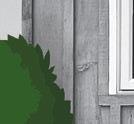


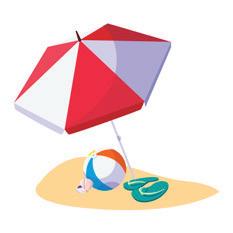




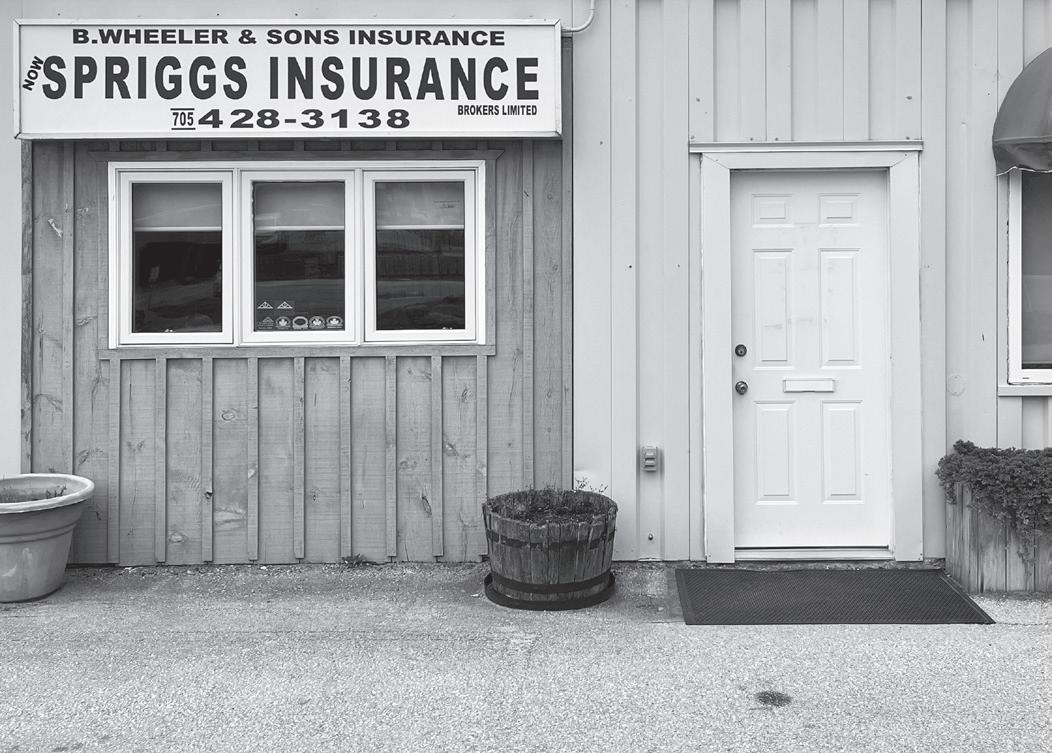

Things happen for a reason
We cry
We fight
We distance people
Listen to your brain
Follow your heart
Accept the changes
Do not go against the flow.
We start a new life
We reinvent ourselves
We laugh
We cherish people and relationships
Things happen for a reason.
R. Bertolo

Powers of Art
Fills the heart
Feeds the soul
Fuels imagination
Frieda Linke
Peace To Peace... Let Me Be... Release Me To Let Me Live, Let Me Breathe... Your Path My Beautiful One, Is Truly Yours Alone... This My Love Is Of Your Making... Know That I Love You With All My Heart & Soul... You Made My Heart Smile... Release & Let Your Earth Angel Go...
Wendy D Pogue

I am an island
Laying in the peaceful sea of life
Waiting, waiting for the next storm to hit
When it does...
It leaves me battered and bruised
Only to sit and heal in the calmness of the sea
Until the next storm
Eventually, it will destroy me
David Young
Poetry Corner
FOR THE MINING -THAT LAYS AHEAD
He climbs out and puts on his gear, Right now no sound he will hear, For in the future he picks and mines, Using a spaceship light to shine, For he is mining on planet Mars, A place far from Earth cars, He works for a mining company, Eventually the miner looks with glee, For gold now does he see, He gets on his ship and reports to Earth back, His superiors are pleased he does not slack, However the search goes on, On planet Mars there is no established dawn, Finally he enters his ship and goes to bed, Preparing for mining - that lays ahead.
Ryan P. Barnett
Collingwood Music Festival
A Feast for the Ears
The sixth installment of the incredible Collingwood Music Festival took place July 9 to 18. Music Director Daniel Vnukowski and his crew continue to expand the show and offered an amazing free outdoor concert in Creemore, at the Village Green. That particular event, called Symphony Under the Stars featured the Kindred Spirits Orchestra. As with many of the concerts during the week of the festival, it was a full house, outdoors. With a leaning to classical music and full orchestras, many performances had other influences including jazz and world music. Youth were featured as well as world-renowned players who have performed around the globe. The festival wrapped up with a gala event on July 18th, a Gershwin Gala. Featured were Adrianne Pieczonka, soprano and Daniel Vnukowski in his concert pianist mode. Also on piano was Stéphane Mayer (piano), Justin Welsh (baritone) and Jonelle Sills (soprano).

Pictured at the opening ceremonies and flag raising for the Collingwood Music Festival, Music Director Daniel Vnukowski is seen here recognizing the outstanding support of the community, volunteers, committees and politicians. His enthusiasm is infectious and likely reflects the attitude of all those involved in making this festival a huge success on every level.

The first concert of this year’s Collingwood Music Festival was the Canadian Brass. From Mozart to Lennon, Coldplay, Bach and more, they covered a lot of musical ground. Pictured here are, from left to right: Jeff Nelson (French horn), Miko Sasaki (trumpets), Keith Dyrda (trombone), Chuck Daellenbach (tuba) and Joe Burgstaller (trumpets). These consummate performers don’t take themselves too seriously, providing the audience with humorous antics throughout the show.


Yet another entertaining group, providing a variety beyond what the unsuspecting listener may expect was the Montréal Guitar Trio. Some classic tunes were given the “MGT” treatment which means new life to the familiar, regardless of genre. Sometimes three guitars, sometimes two with bass guitar but then... Cajun accordion, fiddle, mandolin, whistling, voice and in their most wonderful French Canadian set, a podorythmie (or planche à pieds)—this is the board at the fiddler’s feet for stomping. This writer was pleased to hear a tune written by French Canadian composer François Dompierre in the French Canadian tunes. Underlying the variety, there was a recurring theme, a tribute to composer Ennio Morricone, best known for his spaghetti western movie scores including the theme for “The Good the Bad and the Ugly”.

player Chuck Daellenbach.
Submitted by Don Beaulieu
Tuba
Shut Up and Listen
Nature’s Been Trying to Tell You Something. If you’re just joining us, welcome to the trail. This series isn’t about hugging trees (unless you’re into that—no judgment). It’s about tuning out the noise, stepping outside, and letting Nature show you what you’ve been too busy to notice: your own clarity, courage, and calm. In the past couple issues, we’ve looked at how Nature doesn’t ask you to perform—it just asks that you be yourself—your true self. And in return? You get something solid: clearer thinking, a deeper sense of ease, and the kind of steady presence that helps you face the day with more grit and less frenzy.
Over the next few issues, I’ll be diving deeper, sharing bitesized insights and quotes pulled straight from the 31-day challenge in my book Shut Up and Listen. Think of it like trail mix for the soul—small, satisfying, and meant to fuel you forward. So whether you’re skimming this from the couch or reading it under a tree, stay with me. There’s a lot more Nature wisdom (and real-life magic) coming your way. This month, we’re digging a little deeper—literally.
BEING ROCK SOLID

We’re talking rocks. Yup, those humble hunks of Earth we used to skip across lakes or stash in our pockets as kids. Turns out, rocks have a lot to teach us about strength, staying grounded, and not crumbling under pressure. They’re like tiny, silent life coaches—minus the clipboard and the hourly rate. Remember when you were a kid, tossing rocks into lakes, collecting pebbles on the beach, or trying to skip the perfect flat stone across the water like you were about to break a world record? Back then, rocks were entertainment. Now, I think they were something more: early lessons in resilience. Think about it. Rocks don’t try to impress anyone. They don’t apologize for being a little rough around the edges. They’ve been battered by time, weather, and pressure, and they’re still here—solid, grounded, and unapologetically themselves. If anything deserves a little respect, it’s that.
So here’s your nature challenge this month: Find a rock
Go outside and let one catch your eye. Maybe it’s rugged. Maybe it’s smooth. Maybe it fits perfectly in your palm like it was made just for you. Pick it up and let it be your personal “I’ve got this” talisman. Pocket it. Carry it around. And when life starts to throw curveballs—or Mondays—you’ve got something solid in your corner (literally).
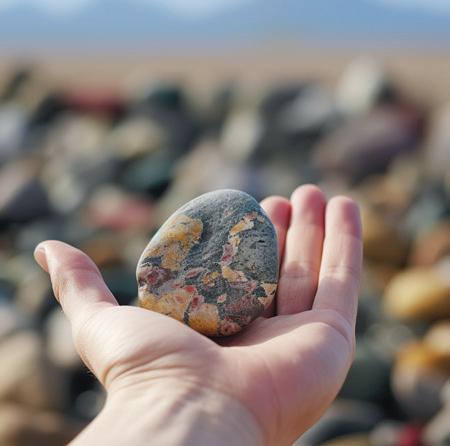
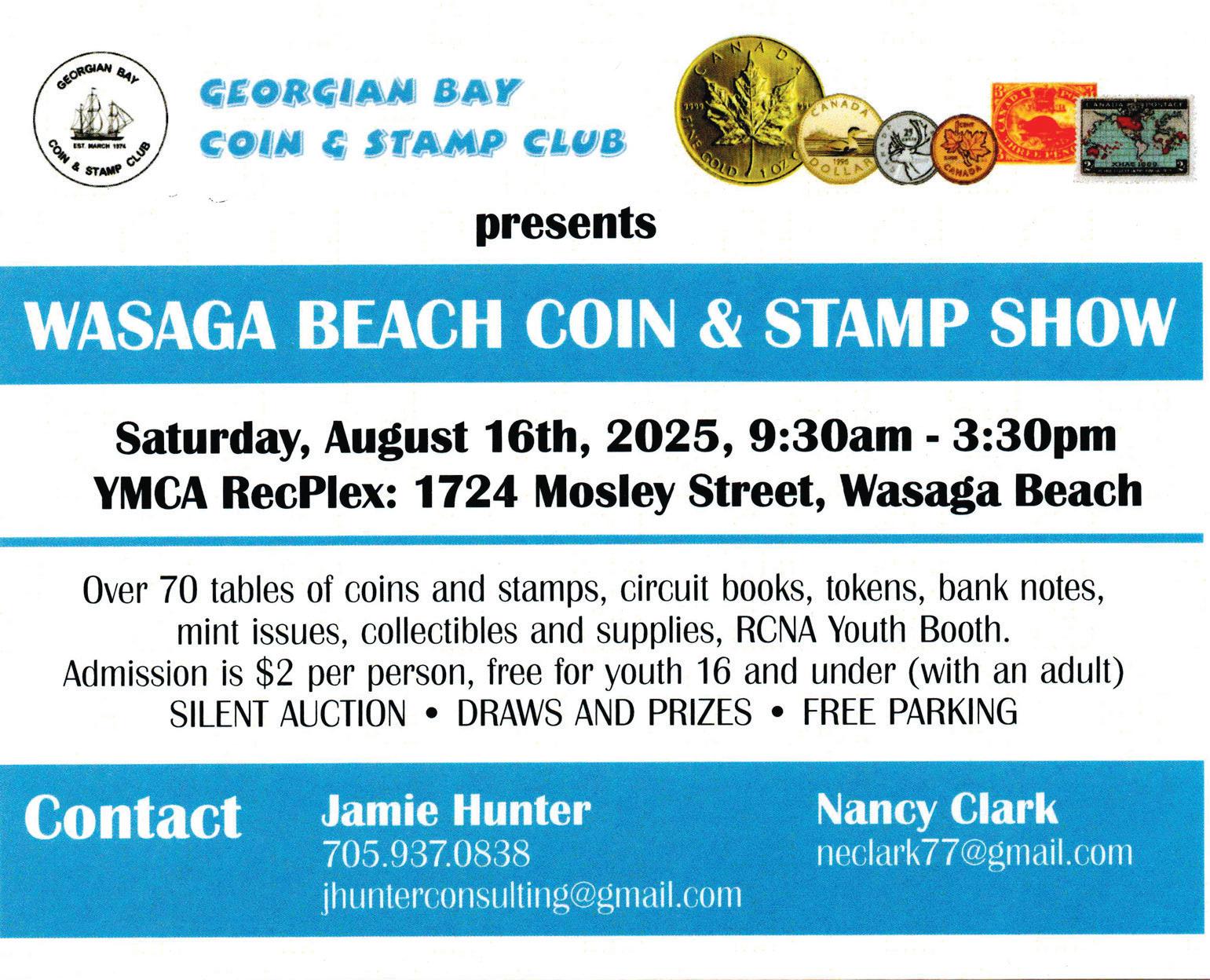
Need help getting started? Try this:
Feel Your Rock
Hold it in your hand. Notice its weight, its texture. Is it cool, warm, rough, pitted, or polished? Think about the journey it’s been on—weathered by rain, wind, and time. It didn’t crumble under pressure. It changed, but it stayed strong. Sound familiar?
Examine Your Find
Does it have markings, dents, or cracks? Maybe it’s perfectly smooth, or maybe it looks like it’s been through a few battles. Either way, it’s here. And it’s got stories. Let those imperfections be reminders that being worn doesn’t mean being weak.
Ask Yourself
What’s something in my life I need to face with more strength?
Where do I need to feel more grounded or stand firmer in who I am? Is there something I’ve been avoiding that I’m actually strong enough to face?
Write It Down
Jot down one area of your life where you want to be more “rock solid.” Maybe it’s setting a boundary, making a decision, or just trusting your gut when doubt creeps in. Keep the note somewhere handy—tucked into a journal, wallet, or even next to your rock. Instant reminder: You totally rock.
Now, I’m not saying a pebble in your pocket will solve all your problems. But I am saying that Nature has a way of handing us the metaphors and messages we need, exactly when we need them.
So go on. Find your rock.
Hold it. Carry it. Let it remind you that you’ve weathered storms too—and you’re still standing.
Strong. Solid. Unshakable.
NATURE’S WAITING
Unlocking Nature’s wisdom is like finding the secret door to a calmer, clearer you. A little time outdoors can lower stress hormones, reduce anxiety, and even lower blood pressure. It clears out the noise, kicks stress to the curb, and gives you a confidence boost you didn’t even know you needed.
And that’s exactly why this column exists. Keep tuning in each month as we crack open more of Nature’s code and start showing up as the best version of ourselves—wild bits and all.
Raven is an inspirational speaker, author, storyteller, and educator whose deep love for Nature winds through everything she creates. From guiding immersive outdoor retreats and leading down-to-earth workshops to producing story-rich albums and podcasts (available on all major platforms), her work is all about helping people unplug from the noise and reconnect with what really matters.
Her latest book, Shut Up and Listen: A No BS Guide to Unlocking Nature’s Wisdom in 31 Days, is now available at Amazon.ca and through her website at www.ravenspeaks.ca, where you’ll find everything she offers—all in one place.
Submitted by Raven Murphy

High Protein Cookies
(NC) If you’re searching for a nutritious, high-protein snack that satisfies your sweet cravings, these seven-ingredient cookies are a must-try. Featured on Kidney Community Kitchen, this recipe is not only simple and delicious but also kidney-friendly and ideal for individuals seeking to manage their overall health or simply looking for healthier desserts. These cookies take only 10 minutes of prep time and are 15 kilocalories per cookie, making them the ideal on-the-go snack. The recipe makes a total of 12 cookies, so you can enjoy them without compromising your nutrition goals.
Prep time: 10 minutes Cook time: 15 minutes Makes: 12 cookies
INGREDIENTS
1 15 oz can garbanzo beans, drained and rinsed 2/3 cup (160 ml) creamy peanut butter stirred 1/4 cup (60 ml) pure maple syrup
1/2 tsp (2 ml) pure vanilla extract
1 1/4 tsp (6 ml) baking powder
Pinch of sea salt
2/3 cup (160 ml) chocolate chips
DIRECTIONS

1. Preheat the oven to 350° F (177°C) and line a baking sheet with parchment paper.
2. Add all of the ingredients except the chocolate chips to a food processor and process until well-combined and a thick dough forms. Fold in the chocolate chips.
3. Form 12 round discs out of the dough (it won’t spread on its own, so you will need to shape it into cookie shapes) and place them on the prepared baking sheet.
4. Bake in the preheated oven 8 to 12 minutes, depending on how soft or crisp you like your cookies.
5. Allow cookies to cool for 10 minutes before diving in.
Food safety tips:
• Wash hands with soap and warm water for at least 20 seconds. Clean all countertops and equipment used for food preparation.
• Do not eat raw dough or batter as it may contain bacteria that could cause you to become sick.
Find more recipes at kidneycommunitykitchen.ca.


www.nepscogroup.ca













Mind. Body. Spirit.

Breathe Easier
(BPT) - How often do you think about your indoor air quality? While many might assume the risk of encountering pollutants and allergens only exists outside, these harmful toxins can’t be left at the door and can actually pose an unseen threat in your home, your office and even your car.
Even the cleanest indoor spaces can have harmful particles wafting around the air. In fact, according to the Environmental Protection Agency, pollutants are two to five times more concentrated indoors, where we spend approximately 90% of their time.
From dust to dander to pollen and smoke, outdoor pollutants and indoor allergens can invade your personal spaces through the tiniest of entry points and negatively impact your health. Sustained exposure to poor air quality can lead to more serious health conditions.
Luckily, indoor air quality is something you can control. Take a look at these five simple tips that you can try to improve the air quality in your most frequented spaces so you can breathe easier and live healthier.
1.
VACUUM FREQUENTLY WITH A HEPA FILTER
Dust, allergens and pollutants can accumulate on your floors, carpets, car seats and more, and become airborne during daily activity. To promote healthier air quality, vacuum frequently using a high-efficiency particulate air (HEPA) filter.
When it comes to indoor air quality, HEPA filters are the gold standard. According to the Allergy & Asthma Network, these filters are designed to capture 99.7% of all particles 0.3 microns or smaller, including mold, pet dander, dust mites, pollen and some small particles from smoke and pollution.
Aim to vacuum the whole house once a week and high-traffic areas, like the kitchen, entryway and living room, two to three times a week. As for your car, give the seats and carpets a good vacuum about once a month.
2. CLEAN YOUR CAR OFTEN
Have you considered your car’s indoor air quality? Whether you spend hours commuting or making several quick trips around town, improving your in-car air quality is crucial. In addition to making changes like recirculating the air in the car instead of bringing polluted air from outdoors, you can improve your car’s indoor air quality by cleaning it often.

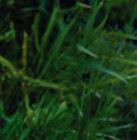

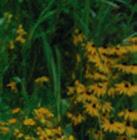
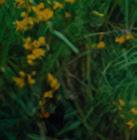
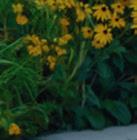








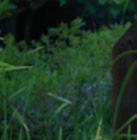
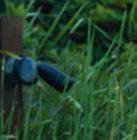
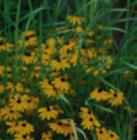

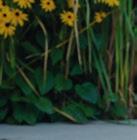









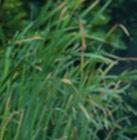
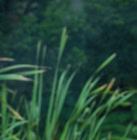

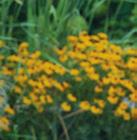
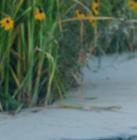
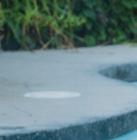


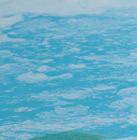





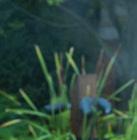
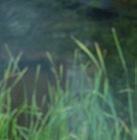
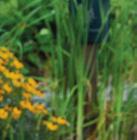
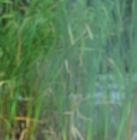





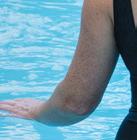

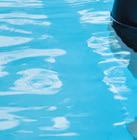



Much like your home, your car accumulates dust. Regularly wiping down the console, dashboard and door panels can reduce these and other air contaminants. Don’t forget to vacuum the upholstery, floor and mats to get rid of dirt and debris.
3.
USE AIR PURIFIERS
One of the easiest ways to improve your indoor air quality is to use air purifiers throughout your house. These portable air cleaners draw in air and filter out allergens and pollutants, improving the health of your home.
Choose an effective model, such as the Bosch Air Series Purifierwhich uses a 3-in-1 filter (including a HEPA layer) to remove over 99% of the impurities in the air, such as pollen, pet dander, dust, viruses and odours. Each purifier features smart sensors that detect pollutants and automatically adapt to the air quality and room. These quiet purifiers are available in three different sizes, so you can find the strength that best suits your needs.
4. CHANGE AIR FILTERS REGULARLY (AND NOT JUST IN YOUR HOME!)
Don’t go too long in between changing your air filters. These key components are essential in protecting the air around you - not just in your home, but in your car, too. Many drivers either aren’t aware of their car’s cabin air filter at all or don’t realize they need to replace it regularly, just as they replace the filter on their in-home HVAC unit. Over time, the particles the filter traps build up, clogging it and reducing its efficiency. To ensure you have continuous clean air, change your filters as often as your owner’s manual recommends.
If your car mechanic has recently mentioned it’s time to change the cabin air filter in your car, products like Bosch HEPA Cabin Air Filters can be a great solution for absorbing fumes, pollen, dust, mold spores, pollutants and odours that enter a vehicle, protecting you and other passengers from poor air quality.
Bosch recommends replacing your cabin air filter every 12,000 miles or so. You can find the cabin air filter behind the glove compartment or under the dashboard.
5. USE NATURAL PRODUCTS
What you use to clean your home and car may actually be polluting your air, as many conventional cleaning products are made with harsh chemicals.
Air fresheners can also be a source of hazardous pollutants. Be it a cardboard freshener hanging around your rearview mirror or a plugin freshener in your living room, these products have been known to emit volatile organic compounds (VOCs) that could compromise your health.
You can keep your spaces clean and minimize toxic chemicals in the air you breathe by opting for natural products. The next time you visit the store, look for nontoxic air fresheners and green or eco-friendly cleaning products that contain natural, plant-based ingredients.
Using these five simple tips, you can improve your in-home and incar air quality and keep it clean for seasons to come.

The Effects of Screen Time on Children & Teens
The debate regarding the benefits and challenges of screen time is clear. Many experts can clearly articulate the negative effects of screen time for children and teens. However, there are many benefits of screen usage as well.
When children and teens have access to educational apps, videos, and online courses, there are opportunities that can enhance learning and provide valuable knowledge. As well, online resources can make information readily accessible, helping with homework and research. Accessing appropriate sites and apps can also enhance skill development like problem-solving, critical thinking and creativity through interactive activities and games. Another area that can be beneficial is the opportunity for social connections. Social media and gaming platforms can help children connect with friends and family, fostering relationships and reducing feelings of isolation.
We are all familiar with the enjoyment screen time can provide. It allows children to unwind and enjoy creative content. Screen time is most beneficial when there is regular supervision by a parent to ensure the child or teen is accessing appropriate sites and apps. It is also beneficial for limits to be set regarding the amount of time a child or teen spends on their screens.
However, excessive contact with screens can significantly affect social interaction and the development of social skills in several ways:
1. Reduced Face-to-Face Interaction: Spending more time on screens often means less time engaging in in-person conversations, which can hinder the development of vital communication skills, including non-verbal cues like body language and facial expressions. Online interactions can sometimes lack depth, leading to superficial relationships. This can affect the ability to form meaningful connections and develop strong relationships.
2. Social Anxiety: Increased reliance on virtual communication may contribute to social anxiety in some individuals, making them more uncomfortable in real-life social situations. This reliance can create isolation in a child or teen. It becomes extremely stressful for some of them to leave their home because of the intense anxiety they feel. This can negatively affect school attendance and gatherings with family and friends.
3. Impaired Empathy and Communication: Face-to-face interactions allow individuals to develop empathy and emotional intelligence through observing and responding to others’ emotions. Excessive screen time may hinder these experiences, leading to less empathetic behaviour. Relying on messages or texts can lead to misunderstandings, affecting how a child or teen can interpret social cues and responses.
4. Decreased Opportunities for Social Play: For younger children especially, excessive screen time can limit cooperative play, which is crucial for learning teamwork, sharing, and conflict resolution among peers. Ongoing access can negatively affect a child’s social skills development.
5. Limited Conflict Resolution Skills: Skills like negotiation and conflict resolution are often developed through direct interactions. More time spent on screens can limit opportunities to practice these essential skills. Weak or undeveloped skills can create confusion and distress in children and teens.
Some of these negative aspects of electronic screens can create vulnerability in children or teens. Without important communication and problem-solving skills, unsavoury people or bullies can prey on our children and teens.
Children and teens can really benefit from parents who are proactive regarding the time their child spends on screens. Setting limits teaches children valuable skills that will benefit them throughout their lives. Parents can also consistently supervise and be aware of what types of apps their child or teen is viewing. This shows our children that we are interested in the games and apps they interact with, which can enhance a healthy relationship between parent and child. While screens can facilitate some communication, promoting a balanced approach that encourages real-life interactions is critical for healthy social skill development.
If you know a child or teen that is struggling with anxiety or is becoming isolated from family, friends or activities because of excessive screen time, please reach out for support.
Thank you, Wendy Hunter, Registered Psychotherapist
In Support Of Children Counselling Whunter63@gmail,com















10 Tips for a Sustainable Summer
Summer is the perfect time to enjoy the outdoors, the beach, the mountain, the forest, the nature, travel, and soak up the sun. But it can also lead to increased consumption, waste, and energy use. Here are 10 easy tips to help you have a more sustainable summer:

Stay Hydrated with a Reusable Bottle
Instead of buying plastic water bottles, carry a reusable one. It reduces waste and pollution and keeps your water cool longer.
Choose Eco-Friendly Sunscreen
Many sunscreens contain chemicals harmful to marine life. Opt for reef-safe, biodegradable options to protect both your skin and the rivers, lakes and oceans.
Eat Seasonal and Local
Summer is peak season for fresh fruits and vegetables. Support local farmers and reduce your carbon footprint by buying from farmers’
markets. Compost your food waste.
Use Public Transport or Bike
Skip the car when you can. Walking, biking, or using public transit cuts down on pollution and helps you stay active and healthy.
Pack Light and Smart for Travel
Lighter luggage means less fuel used. Bring reusable items like cloth napkins, cutlery, and shopping bags.
Ditch Single-Use Plastics
Bring your own containers, cups, and utensils for picnics and barbecues. Say no to straws and plastic bags.
Eco-Conscious Camping
Camp responsibly by following “leave no trace” principles. Use solar-powered gear and avoid disturbing wildlife.
Conserve Water
Shorten your showers, water plants in the early morning, and use a broom instead of a hose to clean driveways. Use a Rain Barrel to collect rainwater.
Support Sustainable Brands
When shopping for summer clothes or gear, choose companies that prioritize eco-friendly practices and materials.
Educate and Inspire
Share your sustainable habits with friends, family and personal network. Join a climate action or environment community association. Small changes can have a big impact when everyone joins in.
Enjoy your summer—greener, cleaner, and more conscious!
LOCAL ACTIONS PRODUCE GLOBAL IMPACT
ENGAGE WITH WASAGA BEACH CLIMATE ACTION TEAM wasagabeachclimateaction.com info@wasagabeachclimateaction.com



Commotions
Shawn Kellerman Shane Cloutier Band
Quisha Wint JW Jones
Angelica Jones Delta Fuse
Glenn Marais + The Mojo Train
Blushing Brides
Lowdown Dirty Mojos
Lisa Hutchinson
Gail Gunnis + The Dirty Roosters
The ZeP SHoW
Ronnie Douglas




Junior Jam

Cheryl Lescom + The Tucson Choir Boys






Submitted by Gerard Dusastre





















A Celebration of Music and Community
The 2025 Stonebridge Wasaga Beach Blues festival is preparing its 13th edition, promising a vibrant and soulful weekend of blues music, culture, and community spirit. Taking place from September 12 to 14, 2025, this annual outdoor festival is held at the picturesque Stonebridge Town Centre in Wasaga Beach, Ontario, known for its stunning location near the world’s longest freshwater beach.
This expansive outdoor space sets the perfect stage for an immersive open-air music experience, featuring two dynamic stages and a lineup of live performances that keep the energy flowing all weekend long. The natural surroundings and wide-open layout invite festival goers to relax, dance, and soak in the music under the sky, ensuring every attendee feels part of the community celebration. With music echoing across the grounds and plenty of room to gather with friends and family, this unique location is the foundation for a truly unforgettable festival atmosphere. Enjoy yourself for the full weekend, day, or evening!
Stonebridge Wasaga Beach Blues has grown into a signature event in the region, attracting approximately 4,000 attendees. It offers a unique blend of musical performances, food vendors, a vibrant vendor village, and a lively atmosphere that appeals to families, couples, and solo travellers alike. The festival is renowned for its eclectic mix of blues and related genres, including rock, R&B, soul, and gospel, making it a diverse celebration of music that resonates with a broad audience.
The festival runs rain or shine, offers free parking, and provides a familyfriendly environment where children 12 and under attend for free when accompanied by an adult. Attendees are encouraged to bring lawn chairs to relax and enjoy the performances in comfort.
DATES
AND TICKET INFORMATION
Dates: September 12-14, 2025
Location: Stonebridge Town Centre, Wasaga Beach, Ontario
Advance Ticket Prices:
Daily Pass: $20
3-Day Weekend Pass: $50
VIP Pass: $150 (includes extra perks)
Children 12 and under: Free
Tickets are available online in advance or at the gate. Buy early and save on the ticket price.
2025 LINEUP HIGHLIGHTS
The festival features an impressive lineup of 20 bands performing across two stages, ensuring a continuous flow of energetic and soulful music throughout the weekend. The lineup includes a mix of local, Canadian, and international artists, showcasing a wide range of blues styles and influences.
Friday, September 12
Lisa Hutchinson 5:20 pm
Pukka Orchestra 6:40 pm
The Zep Show 8:00 pm
Blushing Brides 9:20 pm
Friday’s lineup kicks off with a rock-heavy evening that will include tribute bands to Led Zeppelin and The Rolling Stones, promising an electrifying start to the festival.
Saturday, September 13
Eyes of Violet - Junior Jam Band 12:05 pm
Ronnie Douglas1 2:40 pm
Gail Gunnis + The Dirty Roosters 1:55 pm
Delta Fuse 3:10 pm
Angelica Jones 4:25 pm
Quisha Wint 5:40 pm
Shawn Kellerman 6:55 pm
Rosie’s Smokehouse Deluxe 8:10 pm
Durham County Poets 9:35 pm
Saturday offers a full day of blues and soul, including performances by festival artistic director Gabor Szepesi’s band, Rosie’s Smokehouse Deluxe, and the highly praised Durham County Poets closing the night.
Sunday, September 14
Lowdown Dirty Mojos 12:05 pm
Glenn Marais + The Mojo Train 1:10 pm
Cheryl Lescom
+ The Tucson Choir Boys 2:15 pm
JW Jones 3:20 pm
Shane Cloutier Band 4:35 pm
The Commotions 5:40 pm
Soul Stew 6:55 pm
Sunday continues the celebration with a mix of blues, rock, R&B, funk, and soul, featuring notable acts like JW Jones, the Shane Cloutier Band, and Soul Stew closing the festival.
EXPERIENCE AND ATMOSPHERE
The festival is more than just music; it’s a community event that brings together music lovers in a relaxed, open-air setting. The Vendor’s Village and Liquid Lounge add to the festive vibe, offering local crafts and delicious food to complement the music.
Artistic Director Gabor Szepesi emphasizes the festival’s commitment to diversity in music styles and creating a welcoming atmosphere for all ages. The event’s success is attributed to the dedication of volunteers and the passion of organizers who strive to deliver a high-quality experience each year.
Stonebridge Wasaga Beach Blues 2025 promises an unforgettable weekend filled with exceptional live performances, community spirit, and the natural beauty of Wasaga Beach. Whether you are a die-hard blues fan or simply looking for a fun and soulful weekend getaway, this festival offers something for everyone at an accessible price. Guests coming from out of town can go to WasagaWelcomes.com/stay to search for local accommodations.
Prepare to immerse yourself in the rich sounds and vibrant culture of Stonebridge Wasaga Beach Blues on September 12-14, 2025. This event continues to build on its legacy as a must-visit blues festival in Ontario, blending music, culture, and the stunning beachside location into a unique and joyous experience. Visit WasagaBeachBlues.com for all information.


NEW KITCHEN CABINETS
Refinish your existing cabinets or install new doors, hardware, sinks, counters, even add to your existing cabinetry.
Showroom: 1470 Mosley St., Unit 5, Wasaga Beach
705-429-9382 info@georgiangraniteworks.ca georgiangraniteworks.ca




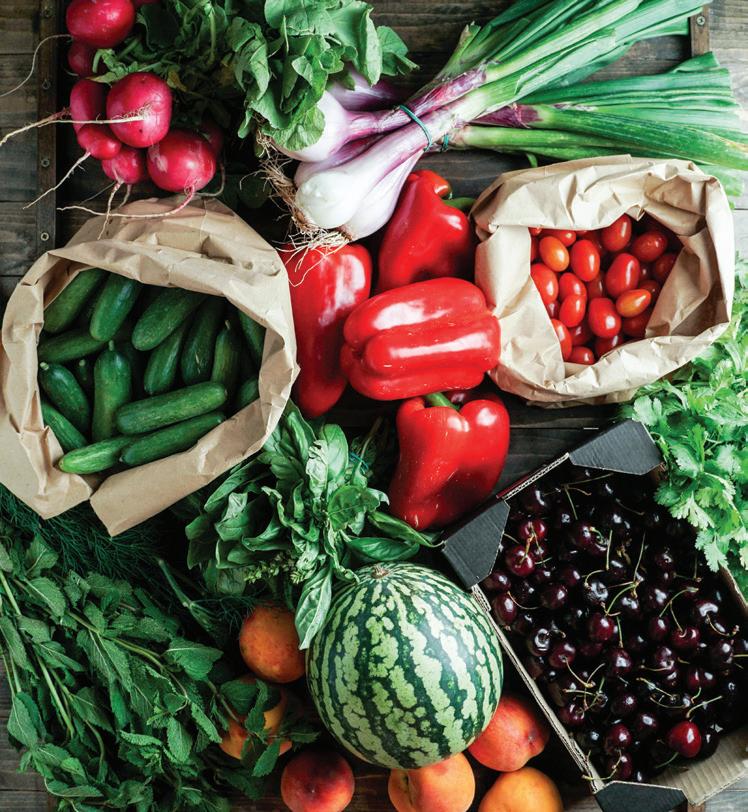

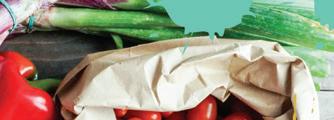




Celebrate the dog days of summer with a special edition of the Creemore Farmers’ and Craft Market, featuring a curated lineup of local farmers, makers, and artisans o ering one-of-a-kind finds.





The Copper Ke le Festival is back in Creem e Sa rday, August 23rd!
SUMMER WHEELS


6 Elgin St. S, Thornbury 519-599-2010 www.carquestthornbury.ca 206034 ON-26, Meaford 519-538-2311 www.carquestmeaford.ca
For all your automotive parts and accessories NEW LOCATION:

WHAT COUNTS AS DISTRACTED DRIVING?
TIPS TO REDUCE ELECTRONIC DISTRACTIONS
(NC) Picture this: you’re on the road with your seatbelt buckled and phone out of sight because you’re a responsible driver. You’ve safely stopped at a red light when you hear a text message ding on your phone. You check the message and punch out a quick one-word reply. No harm done. Light turns green and off you go.
But did you know that by writing out that one word, you may be breaking the law?
All provinces and territories in Canada have bans on using cellphones or hand-held electronic devices while driving. Penalties can include fines and demerit points.
What can you do legally while driving?
• View the display screens of GPS units
• Use a hands-free wireless communication device if you absolutely have to take a call
Even with these exceptions, it’s wise to reduce distractions from your phone or other devices as much as possible. According to CAA, you’re 23 times more likely to be involved in a collision if you text while driving and four times more likely if you talk on a phone.
Focused driving helps save lives and maintains your good driving record, but it can also help save you money. For instance, safe, non-distracted driving could lead to insurance savings from providers like TD Insurance. For their customers who haven’t been in an at-fault or partially at-fault accident for at least six years and have accident forgiveness in their policy, they could be “forgiven” for the first at-fault or partially at-fault accident. This means their premiums won’t increase at renewal as a result of the accident.
“Canadians work hard, and we want to help them secure the best protection while keeping money in their pockets by making them aware of how they can save on their insurance,” said Bruno Jauernig, vice president, TD Insurance.
“From claims-free rewards for safe drivers, to preferred rates for alumni and professionals, policy discounts and savings start to really add up, which could make a huge difference for Canadians, especially in today’s economy.”
Here are some ways you can reduce electronic distractions:
• Know your route: Map out a route before driving, or use the voice navigation feature on your GPS or map app.
• Set a playlist: Decide before you drive what music to listen to. If you are travelling with others, designate a DJ in charge of setting the vibe.
• Turn off notifications: Put your phone on vibrate to limit incoming distractions. Remember, there’s nothing so important it can’t wait until after the car ride is over.



Adventure in Your Backyard!
ADVENTURE AIR CONDITIONER AMUSEMENT PARK AUGUST BEACH FARMERS MARKET FESTIVAL FISHING GAMES HOT ICE CREAM KAYAK POOL POPSICLE READING RELAXATION RIVER SALAD SMORES SUMMER SUNNY TENT
